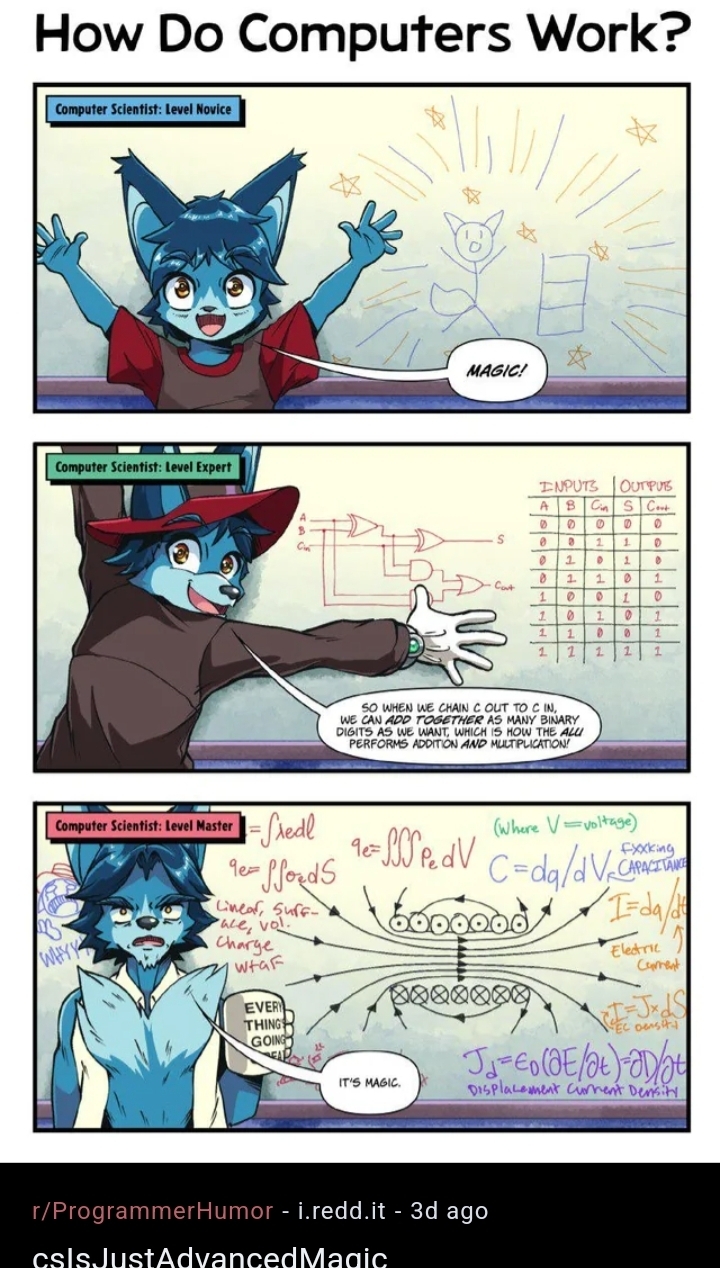this post was submitted on 27 Jul 2024
479 points (99.4% liked)
196
16563 readers
1628 users here now
Be sure to follow the rule before you head out.
Rule: You must post before you leave.
founded 1 year ago
MODERATORS
you are viewing a single comment's thread
view the rest of the comments
view the rest of the comments

Quantum Physics Postdoc here. Although technically correct this is also somewhat misleading. You need the band structure of solids, which is due to quantization and Pauli exclusion principle. The same quantum mechanics that explains why we did those strange electron energy levels for atoms in highschool. The majority of quantum mechanics, however, is not required: coherence, spin, entanglement, superposition. In the field we describe semiconductors as quantum 1.0, and devices that use entanglement and superposition (i.e. a quantum computer) as quantum 2.0, and smear everything else in-between. This
It's the 1000 Lv. boss magic counter attack against the 100 Lv surprise attack, the complexity is just to much for our mind
Can we trade?
Great write-up btw.
Oh my sweet summer child, a 100x yes, if only it were possible.
But more seriously, if you're doing EE, the world of quantum is your oyster. Specialize in RF/MW design and implementation, we use it for qubit control, and you'll be highly valuable.
This what?
Oh no! The [clever quantum mechanics joke] got him!
Schrödinger opened the box 😱
[radioactive decay triggered the poison gas?]
[Quantum hype train?]
[Imposter syndrome?]
Interesting. Does tunneling fall under 1.0 or 2.0? Isn’t it considered a property of classical electrical engineering?
Good question. It would be application specific. I think evanescencnt wave coupling in EM radiation is considered " very classical" (whatever that actually means). But utilizing wave particle duality for tunneling devices is past quantum 1.0 (1.5 maybe?). However, superconductivity tunneling in Josephson junctions in a SQUID is closer to quantum 1.0, but 2.0 if used to generate entangled states for superconducting qbits for quantum computing.
Clear as mud right?
It is now that I’ve looked up the different types of tunneling you mentioned. I didn’t know there were multiple types of tunneling before now.
Thanks for the informative reply and prompting me to do some reading!
You're talking the old CPU designs, not the current ones fighting tunneling effects or the work-in-progress photonics & 2D hybrids.
No, I am not sure that I am.
Photonic processing, whilst very cool and super exciting, is not a quantum thing... Maxwells equations are exceedingly classical.
As for the rest it's transistor design optimisation, enabled predominantly by materials science and ASMLs EUV tech I guess:), but still exploits the same underlying 'quantum 1.0' physics.
Spintronics (which could be what you mean by 2D) is for sure in-between (1.5?), leveraging spin for low energy compute.
Quantum 2.0 is systems exploiting entanglement and superposition - i.e. qubits in a QPU (and a few quantum sensing applications).